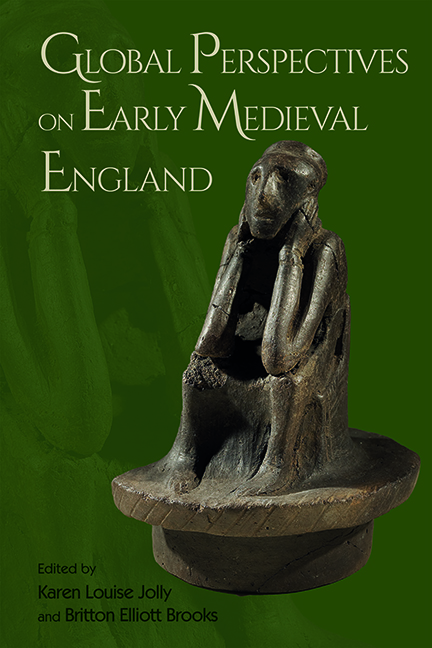Chapter 2 - Globalizing Anglo-Saxon Art
Published online by Cambridge University Press: 26 May 2022
Summary
SURPRISING THOUGH it may seem, the study of Anglo-Saxon art does not feature with any great regularity in the history of western European art; in Britain only two or three universities include specialist modules on Anglo-Saxon art in their art history curriculum. In large part this is because the art of the Anglo-Saxons is (rightly) not considered to exist comfortably within the parameters of the classical tradition, the art emerging from the visual traditions of ancient Greece and – more usually – republican and imperial Rome. It is this that is prioritized within the canon of art history in the western European tradition, not only in and of itself, but because it is also considered to underpin the art of the Renaissances of the fifteenth and sixteenth centuries, that of the ‘Baroque’ of the seventeenth century, and to inspire the neo-classical revivals of the eighteenth through early twentieth centuries. In other words, the art of the last five centuries articulated within a perceived classical tradition is that which, in effect, forms the canon of art history within the parameters of post-medieval western European art that is the focus of the discipline across much of Europe, North America and Australasia. This is not, of course, the tradition of art produced by the majority of cultures across the globe. But global art is also studied in only a very few art history departments in Britain, except in so far as it is deemed to impact on the art of Western Europe, as in the late nineteenth century or the early twentieth century when the art of eastern Asia and that of continental Africa, perceived as exotica, influenced artists working in Europe.
In other words, Anglo-Saxon art plays as little a role in the canon of western European art history as it is studied today within the university as does any art produced outside that canon. This, of course, is also true of other arts emerging from the islands of Britain and Ireland during the early medieval period: those produced by the Scandinavian settlers in the region and by the ‘Celtic’ peoples of Ireland (and Scotland), so-called since the late eighteenth/nineteenth-century move towards independence from England by these regions.
- Type
- Chapter
- Information
- Global Perspectives on Early Medieval England , pp. 34 - 52Publisher: Boydell & BrewerPrint publication year: 2022



